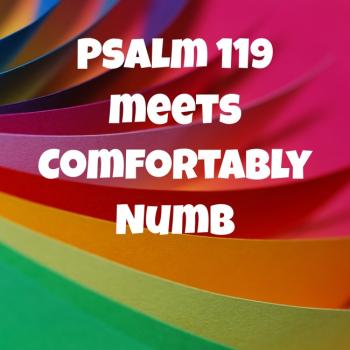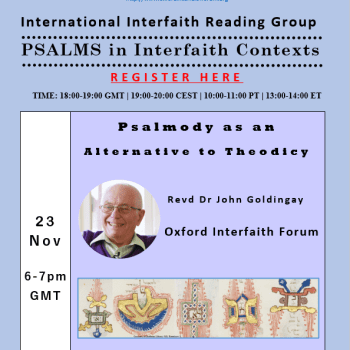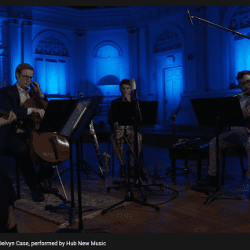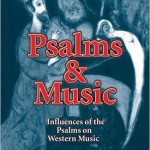In recent years Bob MacDonald has played a particularly active role in drawing attention to the work of Suzanne Haik-Vantoura on the “accents” (more accurately called cantillation marks) found in Hebrew Bible manuscripts going back a millennium or so. He has also mentioned that there is a particularly important test case for any deciphering key: a traditional melody used to chant Psalm 114. He talks about this towards the end of his video here:
Here is the melody that results from applying Haik-Vantoura’s interpretation of the cantillation marks to Psalm 114. This is a digital rendering using the MIDI files Bob has created for the Hebrew Bible, which my son Alex kindly processed using software that he owns, using the sound of a santoor which is a traditional instrument from the Middle East even if not necessarily found in ancient Israel. It is the instrument known in English as a hammered dulcimer, and although there is a history of translating the Bible so as to include mention of a “dulcimer” in Daniel 3, in a Babylonian context, that is almost certainly a misnomer as this instrument is a more recent invention at least in this form. Nonetheless, as a Persian instrument it gives a sense of the region’s traditions, and will do in the absence of a VSTi of a kinnor or lyre of Megiddo!
I have been listening to the melodies of the Psalms and it is always hard to know whether the result is generally compelling because so many different combinations of notes from a scale will generally work musically as a melody, or because this is the definitive key. I think the best way to put it to the test might be to create a program that will take individual Psalms and try all the different possible associations of the seven cantillation symbols with the seven notes. I would ideally want this to include trying renderings that reflect some of the maqam scales used in Arab music, as well as raised notes traditional in Jewish and other Middle Eastern music which Bob MacDonald already integrated into some of his renditions, to see what difference that makes. If the only result is to confirm that the Haik-Vantoura key works better than any other, that would make the effort worthwhile. It is especially worth doing now that the process can be automated. A lot of commonalities emerge across the melodies, and while most make musical sense and are strikingly reminiscent of Jewish and other Middle Eastern traditional music, a very few sound rather odd, which makes me think that perhaps in a different mode, or switched from minor to major, they might be worth considering. Otherwise, if most of the times the key works, the few exceptions might always be due to copying errors.
Here is the traditional Psalm tone melody used in Gregorian Chant for Psalm 114, for comparison:
It is known as “Tonus Peregrinus” and you can hear an mp3 rendering in English as well. Do you think that that melody could have ultimately been derived from the Hebrew one, and then followed a different evolutionary course that led to the differences between them?
Here is a combination of Hebrew and Latin chants into one work:
If you know me you know that I won’t end things there. Here is Zoltan Kodaly’s setting of the Psalm:
Here is Psalm 8 by Latvian composer Rihards Dubra, just because:
Do listen to Bob MacDonald’s adaptation of the melody resulting from his work from Psalm 145:8-14, with words in the English language and our approach to choral singing in harmony integrated.
Also on the Psalms, religious music, and/or ancient music:
Theodore W. Burgh, “Music and Musical Instruments in the Hebrew Bible and Ancient Israel/Palestine” (article in The Bible and Interpretation)
Philip Jenkins is writing a biography of Psalm 91:
Bob MacDonald on Psalms 52, 53, 54, 55, 57, 67, and 144
Jim Davila notes a new book on divine aggression in the Psalms
https://www.episcopalcafe.com/2fab-st-hildegard-of-bingen/?utm_source=feedly&utm_medium=rss&utm_campaign=2fab-st-hildegard-of-bingen
Machanic Manyeruke and the Gospel Music Scene in Africa













